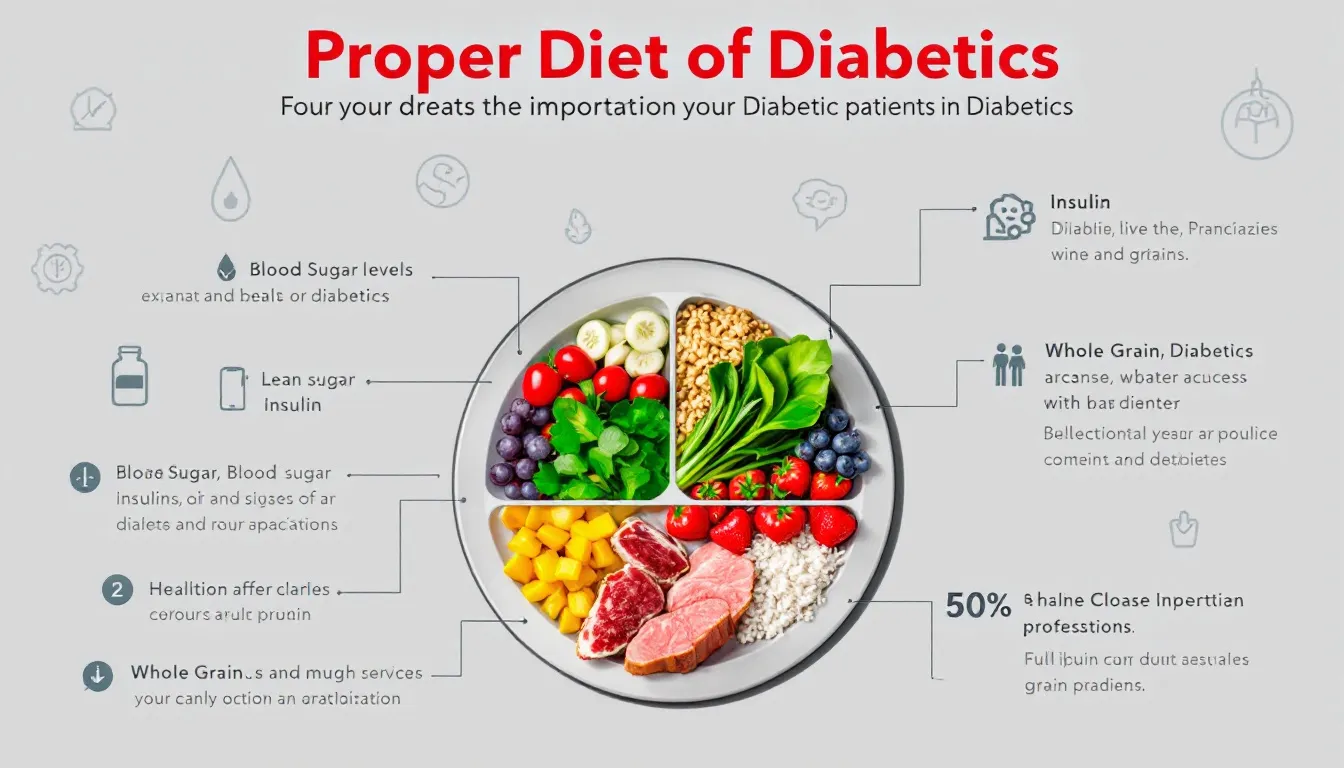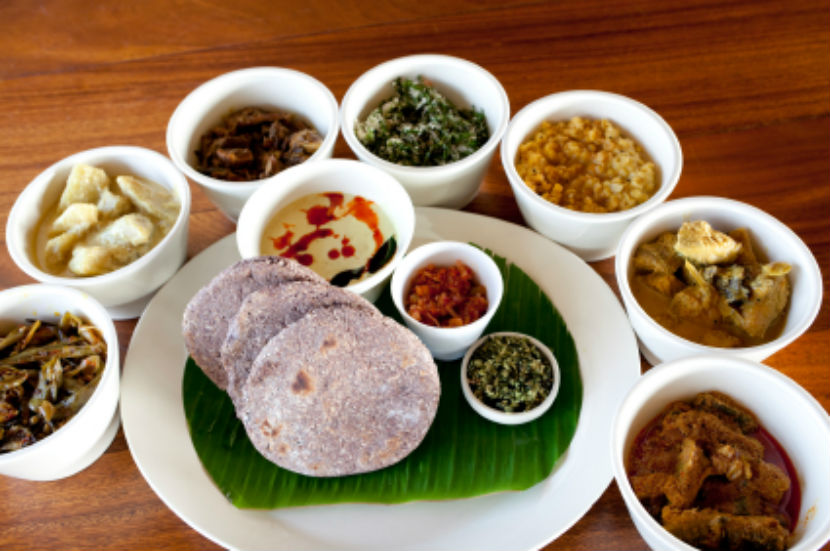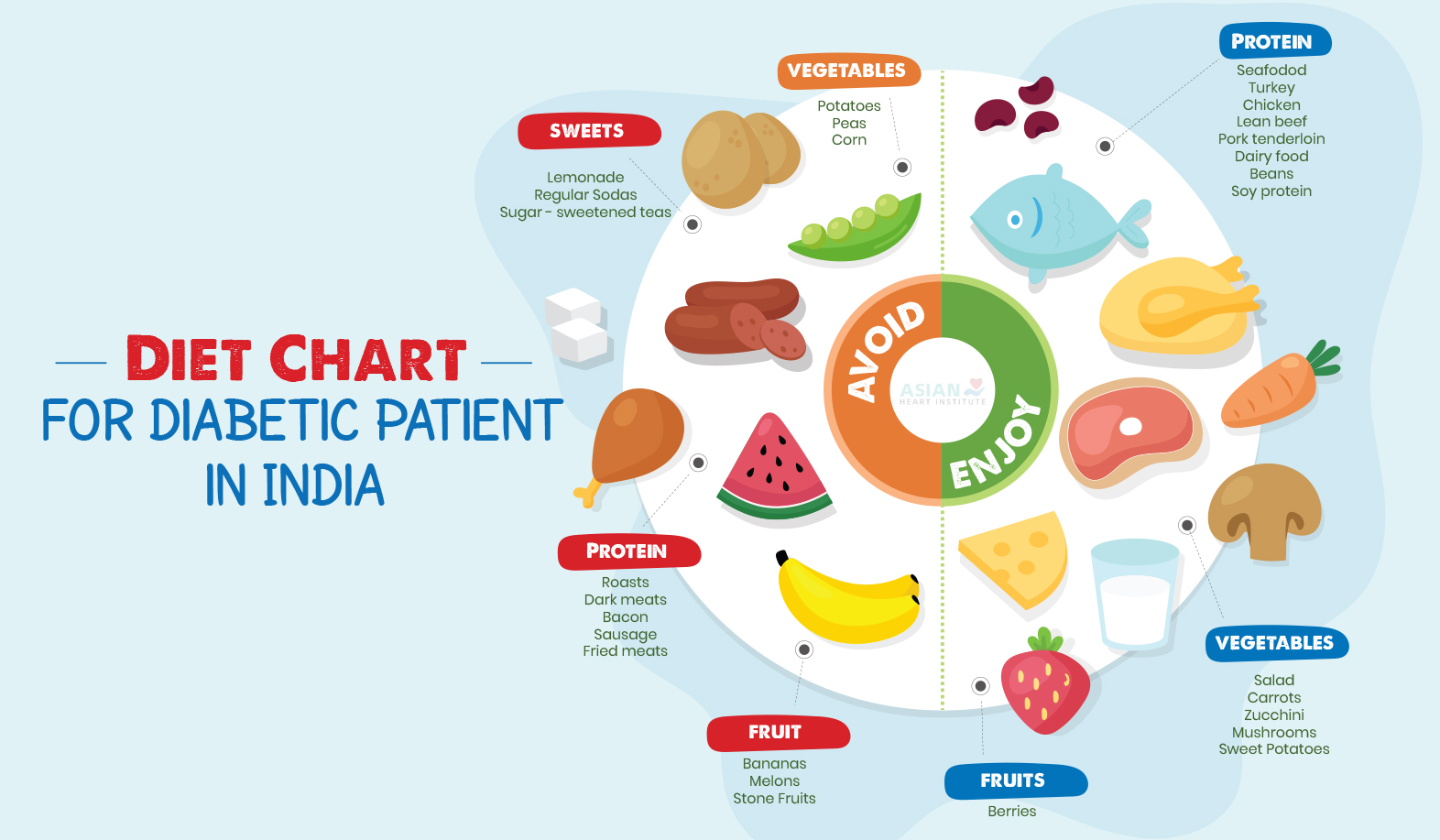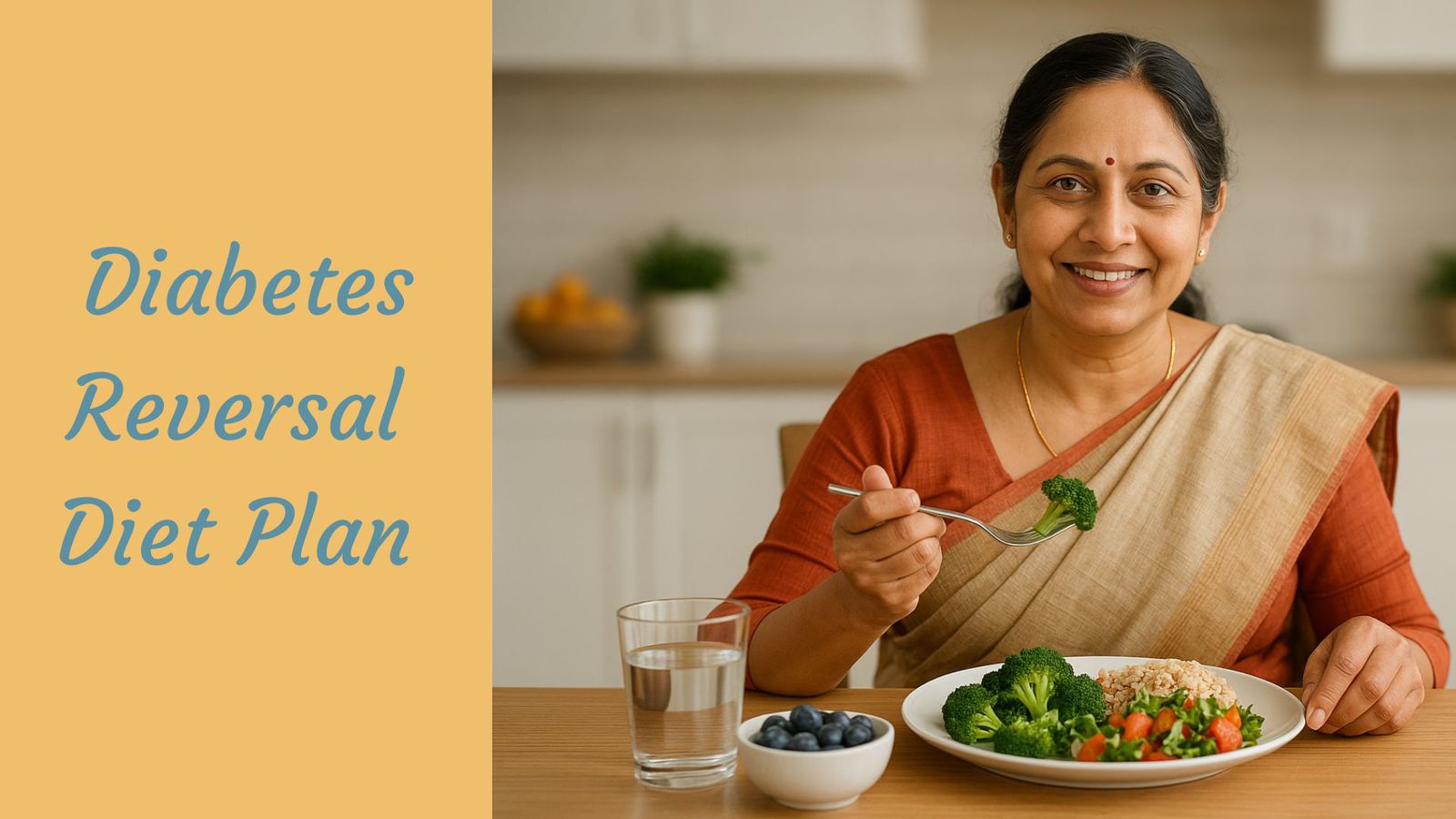Managing blood sugar is one of the biggest challenges faced by diabetic patients, but with the right approach, it is possible to take control naturally.
A carefully designed diabetes diet or diabetic diet acts as a structured healthy eating plan that focuses on nourishing the body with the right balance of nutrients.
By choosing healthy foods rich in fiber, adding healthy fats, and following meals with a low glycemic index, you can support stable blood sugar levels throughout the day.
The goal of a step-based meal plan is not only to lower blood glucose levels but also to make everyday eating practical and sustainable. With consistent choices, the right diabetic diet helps improve energy, reduce dependency on medication, and ultimately manage diabetes in the long run.
This guide outlines a diabetes reversal diet plan with 7 proven steps to help you eat smarter, feel healthier, and naturally bring your blood sugar under control.
What is a diabetes reversal diet plan and how does it work?

A diabetes reversal diet plan is a structured way of eating designed to improve blood sugar control, reduce insulin resistance, and support long-term health.
The focus is on removing harmful foods like white bread and other refined carbohydrates, which can spike blood sugar, and replacing them with nutrient-dense options.
Balanced meal planning is at the core of this approach, combining lean protein, fiber-rich vegetables, and sources of polyunsaturated fats to help the body process glucose more effectively.
This type of diet plan doesn’t just target diabetes—it also lowers the risk of complications such as heart disease and kidney diseases, both of which are more common in people with uncontrolled blood sugar.
Simple swaps, like choosing water or unsweetened iced tea over sugary drinks, make the plan sustainable in daily life.
Working with a registered dietitian can help personalize the diet to your needs, ensuring you get the right nutrients while avoiding foods that raise blood sugar.
In short, a diabetes reversal diet plan works by combining smarter food choices, controlled portions, and lifestyle adjustments to bring the body back into balance.
Why is a proper diet important for diabetic patients?

A proper diet is vital for diabetic patients because it directly helps control blood sugar, improve insulin sensitivity, and reduce the risk of complications from high blood sugar levels.
Through nutrition therapy, smart portion control, and a focus on healthy meals with complex carbohydrates and good fats, diet becomes the foundation of effective diabetes management and long-term diabetes care.
Why diet is important for diabetic patients:
- Helps control blood sugar and avoid sudden spikes.
- Improves insulin sensitivity for better glucose use.
- Supports portion control to prevent overeating.
- Encourages a healthy diet with complex carbohydrates.
- Protects heart health with monounsaturated and polyunsaturated fats.
- Reduces reliance on sugary drinks like fruit juice.
How does a diabetic diet support natural blood sugar management?

A well-planned diabetic diet helps diabetes patients maintain stable blood sugar levels, reduce the risk of cardiovascular disease, and support overall metabolic health. Understanding how foods affect glucose and making smart choices can make diabetes control achievable.
Here’s a detailed 7-step approach:
Step 1: Focus on a Balanced Diet
A balanced diet combines proteins, complex carbohydrates, and healthy fats in the right proportions. Prioritize whole grains over refined grains and include plenty of vegetables and fruits.
This helps maintain consistent blood sugar level throughout the day and reduces sudden spikes. Regularly eating healthy meals improves energy, supports metabolism, and prevents overeating.
Step 2: Limit Trans Fats
Avoid trans fats found in fried and processed foods, packaged snacks, and baked goods. These fats increase the risk of cardiovascular disease and negatively affect insulin function.
Replacing them with healthy fats like olive oil helps diabetes patients manage blood sugar levels while protecting heart health.
Step 3: Use the Plate Method for Meals
The plate method is a visual way to portion meals: half the plate with vegetables, one-quarter with lean protein, and one-quarter with whole grains or starchy vegetables. This makes planning meals simple, controls calorie intake, and ensures balanced nutrition while helping maintain stable blood sugar levels.
Step 4: Include Lean Proteins and Eat Fish
Incorporate lean protein sources such as chicken, eggs, legumes, and encourage patients to eat fish rich in omega-3 fatty acids. These proteins stabilize blood sugar levels, improve satiety, and reduce the need for frequent snacking, supporting overall diabetes control.
Step 5: Opt for Healthy Fats
Use heart-healthy fats like olive oil, nuts, and seeds while minimizing saturated and trans fats. Monounsaturated and polyunsaturated fats help regulate blood sugar level and support cardiovascular health, which is especially important for people with diabetes.
Step 6: Choose Low-Fat Dairy Products
Incorporate low fat dairy products such as yogurt or milk for calcium and protein without extra saturated fats. These help maintain energy, improve satiety, and prevent high blood sugar levels that can occur with full-fat dairy or sweetened options.
Step 7: Monitor Blood Pressure and Metabolic Health
A proper diabetic diet also addresses risk factors for high blood pressure and other metabolic diseases. By focusing on nutrient-dense foods and maintaining blood sugar level control, diabetes patients can reduce complications and support long-term diabetes control.
Which Indian foods fit well into a diabetes diet plan?

A diabetes diet plan doesn’t have to be bland or restrictive—many traditional Indian foods are perfect for stabilizing blood sugar while supporting weight management and overall health. Choosing low glycemic foods and non-starchy vegetables can help regulate glucose and prevent spikes.
Understanding how different foods affect your body allows you to create balanced meals that nourish the body and improve health outcomes.
Some Indian foods that fit well into a diabetes diet plan include:
- Non-starchy vegetables: Spinach, cauliflower, broccoli, cabbage, and bottle gourd are rich in fiber and low in calories.
- Whole grains and low glycemic foods: Brown rice, quinoa, millets (like ragi and jowar), and whole wheat chapati help maintain steady blood sugar levels.
- Legumes and pulses: Lentils, chickpeas, moong dal, and kidney beans provide protein and fiber without causing spikes in glucose.
- Healthy fats: Moderate amounts of nuts, seeds, and olive oil or ghee can support weight management and heart health.
- Dairy and protein: Low-fat yogurt, paneer, and eggs help build balanced meals that sustain energy.
- Spices and herbs: Cinnamon, fenugreek, and turmeric may help improve insulin sensitivity and overall metabolism.
By combining these foods into balanced meals with controlled portions, diabetes patients can enjoy traditional Indian cuisine while keeping their blood sugar stable and improving health outcomes.
How to Create a Complete Diabetic Diet Food List for Healthy Blood Sugar Levels

Creating a diabetic diet food list helps diabetic patients manage blood sugar levels naturally. Here’s a step-by-step breakdown:
1. Include High-Fiber Foods
- Whole grains like oats, quinoa, and barley
- Legumes such as lentils, chickpeas, and kidney beans
- Non-starchy vegetables like spinach, broccoli, and cauliflower
- Fruits with edible skin like apples, pears, and berries
Benefit: Slows glucose absorption and supports diabetes control
2. Add Lean Protein Sources
- Eggs, paneer, tofu, and fish
Benefit: Helps stabilize blood sugar, keeps you full, and supports healthy weight
3. Incorporate Healthy Fats
- Nuts, seeds, and olive oil
Benefit: Improves heart health and balances cholesterol levels
4. Avoid Refined and Fried Foods
- Minimize white rice, sugary snacks, and fried foods
Benefit: Prevents blood sugar spikes and reduces risk of metabolic disease
5. Plan Balanced Meals
- Use the plate method: half vegetables, one-quarter protein, one-quarter whole grains
Benefit: Ensures a healthy diet with proper nutrient distribution
6. Control Portion Sizes
- Spread meals across the day in smaller portions
Benefit: Helps maintain stable blood sugar levels and aids in weight management
7. Personalize Your Diet List
- Work with a registered dietitian to choose foods suitable for your lifestyle and preferences
Benefit: Supports long-term adherence and improves health outcomes
Why are fiber rich foods important in a diabetes reversal diet plan?

Fiber-rich foods are essential in a diabetes reversal diet plan because diet plays a central role in managing diabetes. They help slow the absorption of sugar in the bloodstream, preventing spikes in blood glucose and promoting stable blood sugar levels.
Including fiber in meals also improves digestion, keeps you full longer, and supports weight management, all of which contribute to long-term diabetes control.
Key benefits of fiber-rich foods:
- Regulate blood sugar by slowing glucose absorption.
- Aid in managing diabetes naturally without medication.
- Promote healthy meals that keep you full and reduce overeating.
- Support heart health by lowering cholesterol and reducing risk of complications.
- Make diet plays more effective in achieving long-term diabetes reversal goals.
HealthyWayFit — India’s Most Personal Diabetes Reversal Diet Plan

Living with diabetes often feels like carrying an invisible weight. You’re told to “eat less,” “exercise more,” or “try another pill.” And yet, your sugars stay stubborn, energy dips continue, and every lab report feels like a warning. What’s missing isn’t willpower — it’s the right diabetes reversal diet plan.
That’s where HealthyWayFit comes in.
We are not another app, generic webinar, or mass-market diet chart. HealthyWayFit is a 12-month, end-to-end diabetes reversal diet plan designed exclusively for Indian professionals who need a solution that fits their lifestyle.
Over the past few years, our team has guided hundreds of Indians toward lowering HbA1c, reducing medicine dependency, and—in many cases—achieving complete reversal through sustainable, personalized diet strategies.
Our tone is simple: empathetic, therapeutic, and committed. We listen first, design second, and stay with you every step of the way.
1) What Makes HealthyWayFit Different?
1. Personalized Nutrition You Can Actually Live With
No quinoa fads or complicated smoothie charts. We work with your ghar ka khana — dal, roti, rice, idli, dosa, paneer, sabzi — and align it to your diabetes reversal diet plan. No separate cooking, no pressure at home. A plan you can follow at 35 or 85.
2. Metabolic Exercise That Works Fast
We introduce simple metabolic movements targeting major muscle groups (legs, shoulders, glutes). These 15–20 minute routines often bring sugar levels down by 50–100 points. No gym membership required.
3. Stress & Sleep Mastery
Deadlines, family responsibilities, or city traffic — stress spikes cortisol, which spikes sugar. Our tools include one-minute breathing routines, sleep optimization, and micro-habits that keep your sugars stable even on busy days.
4. Doctor-Led, Holistic Care
Work directly with a Senior MD Diabetologist who monitors your medical safety while coaches optimize your diabetes reversal diet plan and lifestyle. This combination of medical oversight and lifestyle expertise is why our clients see results others only promise.
5. Relentless Support & Accountability
Weekly coaching calls, daily check-ins, habit tracking, and guides for festivals, dining out, travel, and weddings. Life won’t stop for your health journey — and neither does HealthyWayFit.
2) What Results Can You Expect?
Most clients notice changes in just 20–60 days: improved energy, lighter mornings, and lower sugar readings. Over the full program, we focus on stabilization so results are not temporary but sustainable year after year with your diabetes reversal diet plan.
3) Is HealthyWayFit for You?
If you’re a working professional or entrepreneur serious about reversing diabetes, and can dedicate 15–30 minutes a day, HealthyWayFit is built for you. This isn’t a crash course—it’s a life-changing system, personalized around your food, family, and lifestyle.
4) Take the Next Step
Begin with a personal consultation to understand your challenges, health markers, and lifestyle. If we’re aligned, we’ll design a custom diabetes reversal diet plan just for you.
Visit HealthyWayFit to move beyond managing diabetes and start reversing it—safely, sustainably, and with support every step of the way.
Book your consultation here: Calendly Appointment.
Frequently Asked Questions(FAQs)

1. What are the proven steps for effective diabetes control through diet?
Effective diabetes control through diet involves structured meal planning, including high-fiber foods, lean proteins, and healthy fats, avoiding refined carbohydrates, using the plate method for portioning, monitoring calorie intake, and focusing on balanced meals.
Consistency and personalization improve blood sugar management and long-term diabetes control.
2. Which foods are most effective to control diabetes naturally?
Foods rich in fiber, low glycemic index grains, non-starchy vegetables, legumes, lean proteins, nuts, seeds, and heart-healthy fats like olive oil are most effective. Avoid fried foods and refined carbs.
These foods stabilize blood sugar levels, improve insulin sensitivity, and support diabetes management naturally.
3. Can a personalized diet chart speed up diabetes reversal?
Yes. A personalized diet chart considers individual needs, activity levels, and blood sugar patterns. It ensures balanced meals, portion control, and the right combination of high-fiber, low glycemic foods, improving insulin sensitivity.
Tailored planning enhances adherence, supports weight management, and can accelerate the process of diabetes reversal.
4. How does counting carbs fit into a diabetes reversal diet plan?
Counting carbs helps diabetes patients monitor sugar intake and avoid spikes in blood glucose levels. It allows for better meal planning, portion control, and integration of low glycemic foods.
By tracking carbohydrate intake, patients can improve insulin sensitivity and maintain stable blood sugar levels, supporting diabetes reversal naturally.
5. What is glycemic index and how does it affect diabetic diet planning?
The glycemic index (GI) ranks foods by their impact on blood sugar levels. Low-GI foods release glucose slowly, stabilizing sugar levels. High-GI foods cause spikes.
Understanding GI helps diabetes patients choose the right grains, fruits, and carbs, plan balanced meals, and optimize diabetes control and insulin sensitivity.
Conclusion
A diabetes reversal diet plan empowers individuals to take control of their health naturally and sustainably.
By focusing on high-fiber foods, lean proteins, healthy fats, and low-glycemic carbohydrates, patients can stabilize blood sugar, improve insulin sensitivity, and reduce reliance on medication.
Structured approaches like the plate method, portion control, and personalized meal planning make adherence practical and effective. Traditional Indian foods can be incorporated without compromising taste or culture.
Combined with lifestyle adjustments such as exercise, stress management, and adequate sleep, a well-designed diabetes reversal diet supports long-term metabolic health, energy, and overall well-being.


